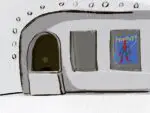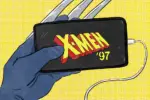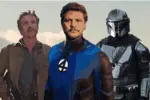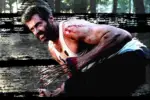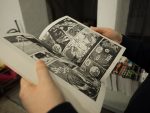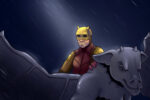Marvel movies are a staple of our culture. In 2008, Marvel kick-started its Avengers franchise with “Iron Man,” and the rest was history. Now, it’s hard to imagine a time without anxiously waiting for the newest bit of Marvel media. However, with the Avengers dispersed after “Endgame,” the franchise was left with a seemingly blank slate, and Marvel has abused it. Marvel’s Phase 4 is a mess of money-hungry content, and fans are starting to notice. New Marvel films and shows have no real goal and too much comedy, and many of their lead characters seem half-baked on their own.
To make matters worse, Marvel’s persistent need to produce as much content as possible in a short amount of time is exhausting fans new and old. These issues not only deter viewers from the movies, but they may just possibly bring an end to the multi-decade reign of the Marvel Cinematic Universe.
The biggest issue with Marvel is how much there is to watch. It has become oversaturated with content. There are so many different stories that all exist within the same universe that viewers often consider it a chore to have to watch every single Marvel movie in existence in order to watch the next one. It’s exhausting, and Phase 4 is only making it worse. Let’s put this into perspective: Phase 4 has 14 connecting works including movies and Disney Plus shows. These movies and shows have all been released within the span of about three years, and Marvel has announced 10 more to come within the next two years.
Marvel’s previous phases, however, took a much slower approach: They did not release 14 connected works until nine years had passed. This kind of slow buildup leaves room to grow and it allows the viewers time to develop a connection to the characters. This is part of what made what is now known as the “Infinity Saga” so amazing. Marvel’s Phase 4, however, completely tosses this concept in hopes of pushing out as much content as they possibly can to make as much money as they can, and it’s eating away at their quality as well as the patience of their fans.
In addition to the oversaturation of content, new characters have been pushed to the forefront, and they are directionless. After “Endgame” brought the classic Avengers lineup to an end, fans were left wondering who would make up the new Avengers. The question was never answered.
Instead, fans have had new, half-baked characters shoved down their throats. In Phase 4 alone, Marvel has introduced about 16 new characters who could potentially join a new Avengers lineup, and yet not a single one seems to have any real purpose. What value do these characters add to the overarching story? On their own, the characters have potential, but they all seem to lack direction. Going back to the slow burn of the “Infinity Saga,” Marvel’s previous phases started off with a small group of characters, and their numbers grew as time went on. Even with the addition of groups outside of the Avengers, audiences were always led back to the franchise to see how it would all add to the Avengers story.
The movies also had one central character that the franchise built upon: Iron Man. This character started the franchise and built the Avengers with his wit and money, and his death at the end of “Endgame” left a gaping hole in the MCU. Iron Man and the Avengers were the foundation of the MCU. However, with no central group or superhero, there is no point to placing all these new characters within the same universe besides some quick references and cheap cameos. It’s sloppy, and Marvel’s plan to add even more directionless characters into the mix leaves little to hope for.
Another popular complaint with Marvel’s Phase 4 is the amount of comedy within its movies and shows. Marvel has always maintained a healthy balance between action, drama and comedy, its jokes strategically placed and meaningful as opposed to scattered around meaninglessly. However, this cannot be said about Phase 4.
One shining example of the problem is “Doctor Strange in the Multiverse of Madness.” The movie is filled with plot holes and cheesy moments, but these flaws can usually be overlooked when the writing is good. Unfortunately, it is not. The movie squeezes in corny jokes haphazardly throughout the movie, and it kills the creepy, horror-esque vibe the movie is going for. Because the tone is off, audiences can see the movie’s other imperfections, such as Wanda’s persistent search for her made-up children after supposedly learning in “WandaVision” that sacrificing other people for your own happiness is bad. And how about Dr. Strange’s lack of a character arc? Much to Marvel’s surprise, many fans didn’t appreciate such a complex and interesting character being sidelined by his supporting characters, Wanda and America Chavez.
“Thor: Love and Thunder,” unfortunately, suffers a similar fate, only much worse. Much like he did in “Thor Ragnarok,” director Taika Waititi embraces a more colorful and comedic approach as opposed to the serious, action-packed style of the previous Thor movies. However, “Thor: Love and Thunder” takes this concept to the extreme. The movie uses random humor throughout the entire film, and some of the running jokes do little to produce even a chuckle from the audience — for example, the screaming goats. The goats gifted to Thor at the beginning of the movie have a habit of screaming very loudly for no reason, and their sudden outburst of screams, partnered with their total disregard for other people’s personal belongings, is hilarious at first; however, these screaming goats are used again and again and again. It’s ridiculous.
The worst scene in the entire movie can be seen when Thor finds Sif on the battlefield with her arm chopped off. Sif refuses Thor’s assistance, opting instead to die in battle in hopes of reaching Valhalla. Instead of sharing a heartfelt moment with his old friend, who is on the verge of death, Thor makes a joke about her arm being accepted and not the rest of her body. This is a prime example of how the humor drowns out the more dramatic aspects of the movie.
Thor also seems to be a side character in his own film, as the story starts to switch focus onto Jane Foster. Jane, who is fighting stage 4 cancer by becoming a female version of Thor, takes up so much of the space that I often forget that this is Thor’s movie and not hers. In hindsight, a little comedy has certainly never hurt the Marvel movies, but too much of anything can be a bad thing, and many of Marvel’s Phase 4 works have too much comedy for their own good.
The final argument against Marvel’s Phase 4 is its interpretations of strong, female characters. Women in cinema are often shoved into the background. They are used as the witty side character or damsel in distress, and even Marvel employs this practice. The addition of strong female leads in the MCU is long overdue, and Phase 4 has definitely delivered, but these characters are not groundbreaking by any means. They’re stale. They are strong in the physical sense, but they lack any real growth as characters. Many of them do not even have any personal obstacles to overcome other than some anxieties about the task at hand, which is usually resolved with a pep talk. They are presented as ready-made heroes with little to no exposition needed, and it doesn’t work.
This template of off-the-rack female characters leaves the viewer feeling as though the character doesn’t really deserve the recognition they are given, which is not the vibe Marvel should be going for. Characters like Kamala Khan, Jennifer Walters, Kate Bishop and America Chavez are interesting and inspired characters, but they give the impression that they do not need anything but a pep talk and a fancy new outfit.
In “Ms. Marvel,” Kamala Khan’s personal obstacle is her strict parents, but this is resolved once they find out Kamala’s secret — they even gift her a new suit! In “Doctor Strange in the Multiverse of Madness,” America Chavez is revealed to be the reason for her parent’s disappearance, which opens up some opportunities to explore grief, depression and even PTSD. However, the movie instead decides to focus more on her insecurities about her powers, and this issue is resolved with a quick talk from Dr. Strange at the very end of the movie.
The practice can also be seen in the show “Hawkeye” with Kate Bishop, who, after some karate training following 20 years as a privileged New York socialite, is more than equipped with the skills needed to take on a Black Widow assassin and the great Kingpin. It’s no wonder viewers feel as though these characters don’t deserve the praise they are given.
To contrast this model, let’s look at the first female superhero in the “Infinity Saga,” Natasha Romanoff. While she did not receive a solo movie until Phase 4, Natasha’s character experiences a great deal of growth. It’s subtle, but it’s important. Natasha starts off as a very reserved and serious character, a consequence of her upbringing in the Red Room where she was trained to be a stone-cold killer since childhood.
We see a glimpse of her vulnerability in the “Avengers” when Loki mentions her red ledger, and it is revealed that Natasha regrets her actions in the Red Room even after escaping it and becoming a hero. She is haunted by her past. Throughout the movies, Natasha has to confront her past and overcome it. She grows past her boundaries and assimilates into a family, and, in “Endgame,” we see her sacrifice herself for the greater good, proving once and for all that her past doesn’t, and never will, define her.
This type of character-building is difficult to do in one movie, but it’s still a great template for how female heroes should be created in the future. Any character, male or female, better resonates with audiences when they’re flawed, and mass-producing flawless characters to represent an underrepresented demographic is just lazy diversity. Women want to see expertly crafted female characters with flaws and troubles. We want complexity, not perfection. With the majority of Phase 4’s leading characters being female, Marvel better workshop these characters before they lose the interest of its female audience.
Marvel movies have been a staple in our culture for a very long time, and they have become famous for their grand storylines and complex characters. However, Phase 4’s shortcomings pose a threat to this legacy. Old fans may grow tired of the addition of stale characters, and new fans may not even give it a chance when faced with the long list of movies and shows needed to really appreciate a single movie. Whether it’s too late for Marvel or not, I have hope that Marvel can possibly pull together its cluttered, bloated universe and turn it into something really spectacular. However, if things keep going the way they are, Marvel’s Phase 4 might be the last phase we ever see.





